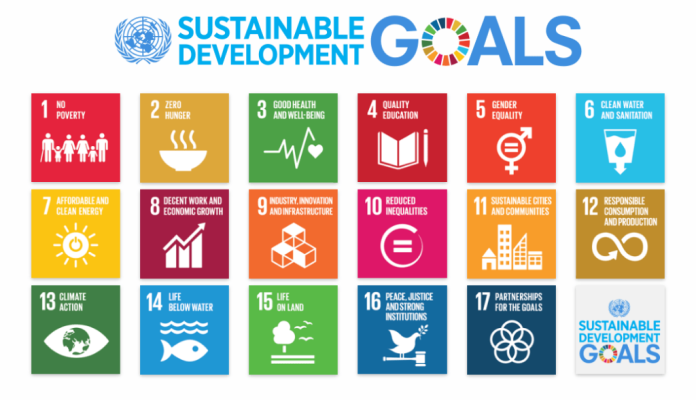The Sustainable Development Goals (SDGs), a universal call to action adopted by the United Nations in 2015, represent humanity’s most ambitious endeavour to tackle pressing global challenges. Encompassing 17 interconnected goals, these objectives set a course for a better, fairer, and more sustainable world by the year 2030. Amidst the complex web of socio-economic, environmental, and governance issues, India, as one of the world’s most populous and diverse nations, stands as a significant player in the pursuit of these aspirations. This comprehensive article aims to take a deep dive into India’s SDG Expedition. We will examine the commendable progress made, the persistent challenges faced, and the strategies and initiatives that the country has undertaken to pave the way for a more equitable, prosperous, and sustainable future
Goal 1: No Poverty
In the relentless pursuit of the first SDG, India has made remarkable progress in reducing poverty levels over the past few decades. Government programs, such as the National Rural Employment Guarantee Act (NREGA) and the Pradhan Mantri Jan Dhan Yojana, have played pivotal roles in providing financial assistance to marginalized communities and promoting financial inclusion. Despite these efforts, India still faces challenges related to income inequality and urban poverty.
Goal 2: Zero Hunger
Addressing the second SDG, India has undertaken substantial efforts to reduce hunger and improve food security. Initiatives like the National Food Security Act have helped increase access to food for millions of vulnerable people. Nevertheless, malnutrition and food wastage remain significant issues that need further attention.
Goal 3: Good Health and Well-being
Turning to the third SDG, India has made significant strides in improving healthcare access through initiatives like Ayushman Bharat, which aims to provide financial protection and access to quality healthcare to millions. However, challenges such as inadequate healthcare infrastructure and disparities in healthcare access across regions still persist.
Goal 4: Quality Education
Progress towards the fourth SDG involves improving access to education, which India has done commendably through programs like Sarva Shiksha Abhiyan and the Right to Education Act. Nevertheless, challenges like a high dropout rate and disparities in educational quality continue to hinder the achievement of this goal.
Goal 5: Gender Equality
In pursuit of the fifth SDG, India has been gradually moving toward gender equality, with more women participating in the workforce and increased awareness about gender-related issues. However, gender-based violence, unequal pay, and social norms still hinder complete gender equality.
Goal 6: Clean Water and Sanitation
The sixth SDG underscores the need for clean water and sanitation, which India has addressed through initiatives like the Swachh Bharat Abhiyan (Clean India Campaign). While significant progress has been made in improving sanitation, access to clean drinking water remains a concern in many parts of the country.
Goal 7: Affordable and Clean Energy
Diving into the seventh, India’s SDG Expedition has demonstrated a commitment to expanding renewable energy sources, such as solar and wind power, to meet its energy needs. Initiatives like the Pradhan Mantri Kisan Urja Suraksha Evam Utthaan Mahabhiyan (PM-KUSUM) are encouraging sustainable energy practices.
Goal 8: Decent Work and Economic Growth
For the eighth, India’s SDG, it has been working diligently to create more employment opportunities through initiatives like Make in India and Skill India. Nevertheless, the informal labour sector still faces challenges such as low wages and job insecurity.
Goal 9: Industry, Innovation, and Infrastructure
Addressing the ninth SDG, India has been investing in infrastructure development and innovation to promote sustainable economic growth. The Digital India initiative and the promotion of start-ups are examples of these efforts.
Goal 10: Reduced Inequality
Recognising the significance of reducing inequality, India has launched programs like the Jan Dhan Yojana and the direct benefit transfer system to bridge economic disparities.
Goal 11: Sustainable Cities and Communities
India is actively working on sustainable urbanization through initiatives like the Smart Cities Mission and the Atal Mission for Rejuvenation and Urban Transformation (AMRUT).
Goal 12: Responsible Consumption and Production
India has implemented policies to promote sustainable consumption and production, including regulations on single-use plastics and initiatives to reduce waste.
Goal 13: Climate Action
India is committed to combating climate change through measures like the National Action Plan on Climate Change and the International Solar Alliance. Transitioning to renewable energy sources and increasing forest cover are also part of these efforts.
Goal 14: Life Below Water
India recognizes the importance of marine conservation and has been working to protect its coastal ecosystems and marine life.
Goal 15: Life on Land
To achieve the fifteenth SDG, India has implemented various measures to protect its forests, wildlife, and biodiversity, including the launch of Project Tiger and Project Elephant.
Goal 16: Peace, Justice, and Strong Institutions
India is actively working toward strengthening its judicial and governance systems to ensure justice and promote peace. Initiatives like e-courts and digital governance aim to enhance transparency and accountability.
Goal 17: Partnerships for the Goals
India actively participates in global partnerships and collaborations to address the SDGs. It seeks to strengthen international cooperation on issues like climate change and sustainable development.
India’s journey towards achieving the Sustainable Development Goals involves substantial progress in various areas, demonstrating the nation’s commitment to creating a more equitable and sustainable future. While significant achievements have been made, challenges persist, and there is still much work to be done to fully realize India’s SDG Expedition by 2030. Continued efforts, innovative solutions, and collaboration at the national and international levels are essential to ensure a better and more sustainable future for all. India’s commitment to the SDGs not only benefits its citizens but also contributes to the global agenda of creating a more just and sustainable world.






























